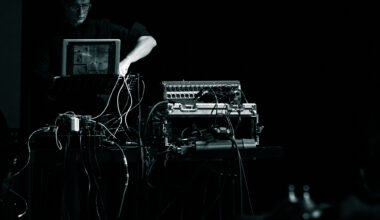OMD frontman Andy McCluskey shares the music, men, maladies and machines that make him tick

HAVING ECZEMA
“I’ve suffered from eczema since around the age of six months. It became a defining part of my life and made me something of an outcast – kids at school would say I had lizard skin. Since I was five I’ve had the wrinkled hands of an 80-year-old. I’d often be in agony walking to school after having ripped the backs of my ankles and knees in bed overnight. I was very angry at myself for not being able to control it. I’m sure it made me more determined to become a control freak, as anyone I’ve worked with you will probably tell you. It’s a vicious circle, as my eczema is triggered by anxiety and once it flares up it only makes you more anxious and unhappy. It had abated by my teenage years, when I swapped it with psoriasis. It’s only when I’m on stage that I get a release from my need for control and the anxiety that drives that.”
MR GELL, MY ART TEACHER
“Unlike most teachers we had at Calday Grange Grammar in West Kirby, Mr Gell, who took us for A Level art, allowed us to do what the hell we wanted. He encouraged us to believe that anything you called art was art. I became infamous at school for being the guy who did the mad art projects, like putting dead seagulls in fibreglass boxes, walking around school with a full-size, bright yellow, papier-mache cormorant on my shoulder, or rolling around in disgusting muddy pools with a skeleton.
“Mr Gell really allowed me to rip the lid off my Pandora’s box brain. I was a huge fan of conceptual art. I was so taken with it that I only just scraped an A Level pass because for my written piece I chose to write about Dada in the form of a Dadaist essay. I think my non-conformism probably didn’t help me there! I had a place at Leeds Art School to do sculpture, specialising in industrial found object art, but I took a gap year and then the band started.
BEAM ENGINES
“My favourite room in the entire world is the steam engine room in the Science Museum with the old beam engines. The Newcomen engine, from 1712, was the first functioning industrial engine. It was designed to lift water out of a mine using steam power and was very primitive, but that’s why I like them – they’re so easy to understand. They’re monstrously huge, once they were cutting edge, but now they’re like Neolithic stone monuments, except they’re mechanical.
“I recently discovered my old art foundation portfolio and so much of my early work featured these monolithic, black structures. They exist for a specific function and, of course, as technology has improved machines have become more efficient. The sound of a working machine is just an accidental by-product of its inefficiency. A steam engine isn’t designed to go ‘chuff’, it’s just venting excess steam. As technology becomes more efficient it becomes increasingly silent.”
MEETING PAUL HUMPHREYS
“Paul was in the year below me at school. When I was 16, I was given to strolling around with a bass guitar slung over my shoulder. Paul noticed and knocked on my door one day, and asked me to join his band. We were called The Id and we played dreadful schoolboy prog rock, although we did write some interesting songs about infant mortality, as well as Yugoslavia and Berlin, long before we’d actually been to these places.
“We quickly saw that we had a real connection. I was buying German imports on a Saturday morning in Probe Records, but I had a really shit mono Dansette record player. Paul was teaching himself electronics and had built himself a stereo with massive speakers, so I would go round to his house to listen to my imports on his stereo.
“Paul is so different from me, he’s a perfectionist, and much more fastidious, especially in terms of sonics. I’m not a fine detail person so he polishes my rough edges and I tend to roughen up some of his delicacies. He also has a lot more patience in the studio. I can’t mix my way out of a paper bag. When we write a song, he’ll do most of the playing and I’ll direct it, with one hand on the record button. He’s the intuitive musician, but he’s happy to let me edit. Sometimes I just leave him noodling until I hear the key phrase and say, ‘Yeah, that’s the bit, remember that phrase!’.”
ERIC’S IN LIVERPOOL
“Anyone of our generation would have to credit Eric’s on Mathew Street as hugely influential. It opened in 1976 and was only around for a few years, but it was the place where you could see any band you needed to at that time. It’s where I saw Devo, The Cure, XTC… they had an open door policy for members on Thursday evenings so you could get in for free. Without that night there would be no OMD, we invented ourselves purely to play that slot.
“We played our debut there, intended as a one-off, supporting Joy Division. Everyone in the audience at Eric’s went on to be in a band you’ll have heard of, but the thing about it was that it wasn’t a punk club. They had such a hybrid jukebox and DJ. In the summer of 1978 we heard this track and I just turned to Paul and said, ‘What the fuck is that?!’. It was ‘Warm Leatherette’. It was at that point we realised something was changing. People who were listening to the same things as us were daring to get up on stage and do it. I think Norman Killon was the DJ. He’s recently retired from the Walker Art Gallery. What he was doing was just as influential as the bands on stage.
‘The Punishment Of Luxury – B Sides & Bonus Material’ is out on 100%





